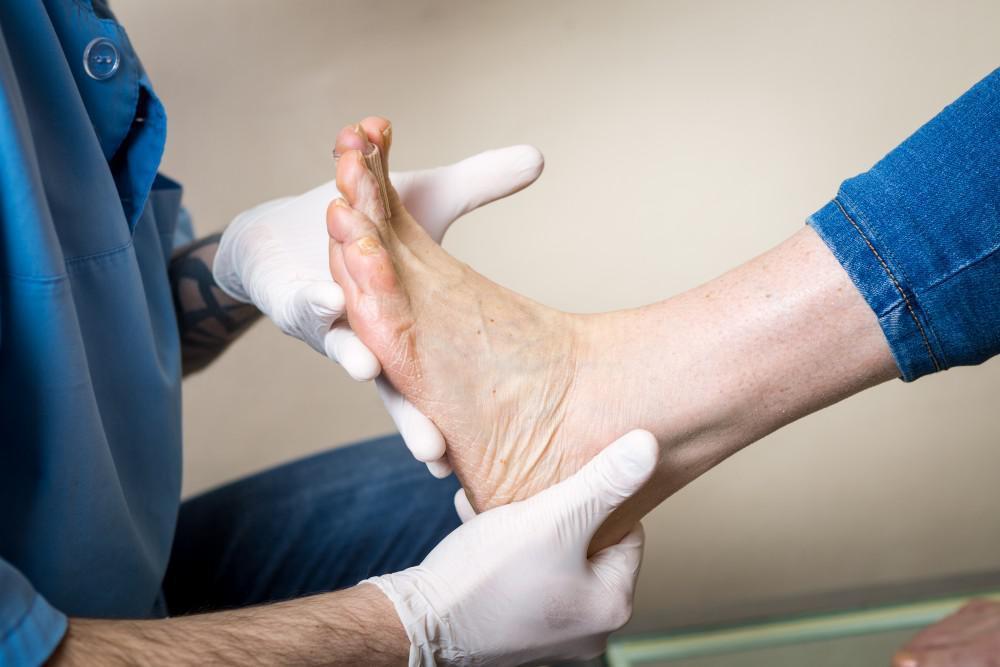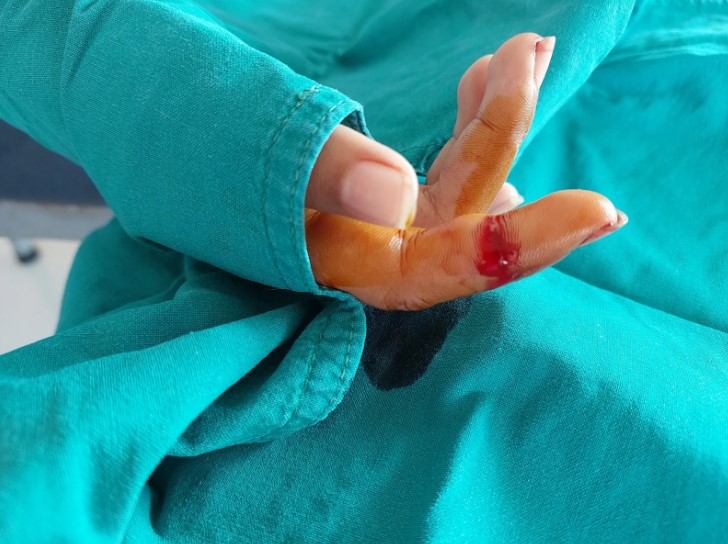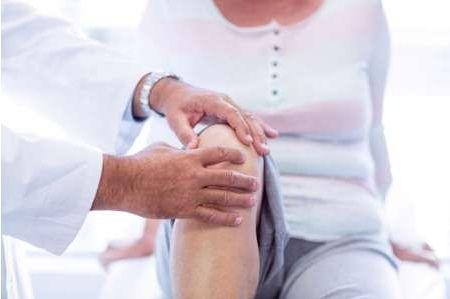Diabetic foot disease is one of the most serious complications faced by people living with diabetes. High blood sugar levels over time can damage nerves, reduce blood flow, and make the feet vulnerable to infections, ulcers, and structural deformities. Left untreated, these issues can progress to gangrene or even necessitate amputation. Orthopedic treatment for diabetic foot disease plays a critical role in managing these complications, preserving mobility, and maintaining overall quality of life. Patients and caregivers must understand the causes, symptoms, and treatment options to act promptly when problems arise. Proactive care can prevent minor issues from becoming severe, and orthopedic specialists are equipped to provide both preventive and corrective interventions. The combination of medical guidance, patient education, and consistent monitoring forms the foundation for effective management of diabetic foot disease.
Recognizing the Signs and Symptoms
Early detection is key to managing diabetic foot disease successfully. Common signs include numbness, tingling, or a burning sensation caused by diabetic neuropathy, which reduces the foot’s ability to sense injuries. Patients may also notice swelling, redness, discoloration, or unusual warmth in certain areas. Open sores, blisters, or ulcers often develop without causing pain, making regular self-inspections essential. Cracks in the skin, fungal infections, or ingrown toenails can also signal potential problems. In advanced cases, infections may spread to deeper tissues or bones, requiring immediate medical attention. Recognizing these signs early allows patients to seek orthopedic treatment for diabetic foot disease promptly, preventing further complications and improving outcomes. Education on symptom awareness empowers patients to take control of their foot health.
The Role of Orthopedic Treatment
Orthopedic treatment for diabetic foot disease is designed to address both structural and functional issues in the feet. Specialists evaluate the patient’s foot alignment, gait, and pressure points to develop a personalized care plan. Goals include preventing ulcer formation, correcting deformities, managing pain, and preserving mobility. Orthopedic interventions are often coordinated with endocrinologists, podiatrists, and wound care specialists to ensure comprehensive care. By addressing mechanical issues and structural weaknesses, orthopedic treatment helps reduce the risk of injuries that can escalate due to poor circulation and neuropathy. Treatment plans may combine non-surgical and surgical approaches depending on the severity of the condition. Long-term orthopedic care emphasizes not only treatment but also prevention and patient education to support foot health.
Non-Surgical Approaches
Non-surgical treatments are often the first step in managing diabetic foot disease. Custom orthotics and footwear are essential tools to redistribute pressure, reduce friction, and prevent ulcer formation. Physical therapy helps improve circulation, strengthen foot and ankle muscles, and support balance, which decreases the risk of falls and injuries. Wound care management involves cleaning, dressing, and monitoring existing ulcers to prevent infection. Lifestyle adjustments, such as maintaining stable blood sugar levels, engaging in low-impact exercises, and avoiding prolonged standing, contribute to healthier feet. Regular monitoring by orthopedic specialists ensures interventions remain effective as the patient’s condition evolves. Non-surgical strategies focus on preventing complications while supporting overall mobility and comfort for patients living with diabetes.
Surgical Interventions
Surgical options are considered when non-surgical measures fail or when structural problems and infections pose a serious risk. Procedures may include debridement to remove dead tissue, corrective surgeries to address deformities, or, in extreme cases, partial amputation to prevent life-threatening infections. Surgical intervention is guided by factors such as severity of neuropathy, presence of ulcers, and patient overall health. Postoperative care is crucial for proper healing, including wound monitoring, blood sugar control, and guided physical therapy. Advances in orthopedic surgery have improved precision, reduced recovery time, and minimized post-surgical complications. Surgeons often work closely with rehabilitation specialists to help patients regain strength, balance, and mobility. Timely surgical treatment can prevent permanent disability and preserve quality of life for diabetic patients.
Preventive Measures and Daily Foot Care
Preventive care is critical in managing diabetic foot disease and minimizing complications. Daily foot inspections allow patients to detect early signs of injury, redness, swelling, or skin changes. Proper hygiene, including washing and thoroughly drying feet, helps prevent fungal infections and bacterial growth. Choosing appropriate footwear that provides support, reduces friction, and accommodates orthotics is essential. Blood sugar management is also key, as elevated glucose levels can impair wound healing and increase infection risk. Patient education is vital, including guidance on avoiding barefoot walking, trimming nails carefully, and seeking immediate medical attention for any abnormalities. Consistent preventive care empowers patients to maintain independence and reduces the need for invasive treatments. Orthopedic specialists provide guidance and monitoring to ensure preventive measures are effective.
Innovations in Orthopedic Treatment for Diabetic Foot Disease
Modern orthopedic treatment for diabetic foot disease continues to evolve with technological advancements. Imaging techniques like MRI and CT scans allow early detection of bone infections and structural abnormalities. Advanced offloading devices, such as specialized boots and braces, relieve pressure on affected areas and support healing. Wound-healing innovations, including growth factor therapies, advanced dressings, and regenerative treatments, help repair damaged tissue more effectively. 3D-printed custom orthotics improve fit, comfort, and pressure distribution, reducing ulcer recurrence. Telemedicine platforms now allow remote monitoring and early intervention for patients who cannot visit clinics regularly. Staying informed about these innovations helps patients access the most effective care and maintain optimal foot health.
Collaboration Between Healthcare Providers
Managing diabetic foot disease requires a multidisciplinary approach involving endocrinologists, podiatrists, orthopedic specialists, and wound care professionals. Coordinated care ensures that blood sugar management, infection control, structural treatment, and rehabilitation are all addressed. Regular communication among healthcare providers allows treatment plans to be updated as the patient’s condition evolves. Patient education, including guidance on foot care and lifestyle modifications, complements professional interventions. Collaboration helps reduce the risk of complications such as ulcers, infections, and amputations. Empowering patients with knowledge and providing professional guidance enhances adherence to preventive and treatment strategies. Integrated care models improve outcomes, supporting both mobility and overall quality of life for patients with diabetic foot disease.
Frequently Asked Questions (FAQ)
How often should a diabetic patient see an orthopedic specialist?
Diabetic patients should have routine foot assessments at least once or twice a year, or more frequently if there are signs of neuropathy, ulcers, or infections.
Can orthopedic treatment completely prevent diabetic foot complications?
While it cannot guarantee prevention, orthopedic treatment significantly reduces the risk by addressing structural issues, pressure points, and early injuries.
What are the risks of delaying treatment for diabetic foot disease?
Delaying treatment can lead to severe infections, ulcers, gangrene, and potentially life-threatening complications. Early intervention is critical.
How do orthopedic devices help in daily management?
Devices such as custom orthotics, protective footwear, and braces redistribute pressure, support proper foot alignment, and reduce the risk of injuries.
Is surgery always necessary for diabetic foot complications?
Surgery is only recommended when non-surgical measures fail, when structural abnormalities need correction, or when infections threaten limb health.











